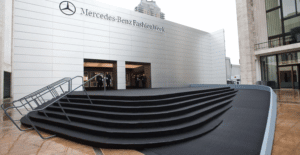
Two times a year, in February, and in September, at Lincoln Center, Mercedes-Benz Fashion Week is the single largest media event in New York City.
The newest collections from apparel brands and designers are exhibited during fashion weeks. Usually, celebrities and fashion aficionados who demonstrate uniqueness in their appearance can initiate trends that make up the majority of participants at fashion weeks. Two times a year, in February and September, at Lincoln Center, one of the most renowned arts and cultural institutions in the world, Mercedes-Benz Fashion Week is the single largest media event in New York City.
Eleanor Lambert started New York Fashion Week approximately 80 years ago, and it is still a major highlight for the fashion business every year. New York City has established itself as the centre of the fashion industry as the event’s host city. The focus of New York Fashion Week has changed over time from bridal gowns to a display of cutting-edge styles. More specifically, there have been numerous changes to New York City Fashion Week, including new names, new venues, and the addition of supermodels, and celebrity attendees. Despite the modifications, New York Fashion Week is still a legendary occasion. In the words of the New York City Week ad,
“We are more than just a fashion show, we are an experience”
The Background of New York Fashion Week
Prior to the establishment of New York City fashion week, companies would conduct fashion shows all year long, but they were only for designers and affluent New Yorkers and did not attract the same kind of attention as fashion week does now. Eleanor Lambert, a publicist, came up with the concept of fashion week in 1943, but it wasn’t officially termed that until 1990. The original Fashion Week was substantially different from what New York Fashion Week is today since it only featured bridal gowns and dresses. In contrast to New York City Fashion Week, which is only held primarily in one location during the Spring, Fashion Press Week was held in the Fall and the Spring and in several locales. The changes in fashion brought on by World War II served as inspiration for Fashion Press Week. Because the United States was shut off from the fashion industry for the first time during the Nazi occupation of France, New York City Fashion Week was established to support American fashion. Designers had to use locally made clothing for the first fashion week since Americans working in the fashion industry were unable to travel to France. It was determined that Fashion Week would take place in Bryant Park at the beginning of the 1990s.
Models facial expressions
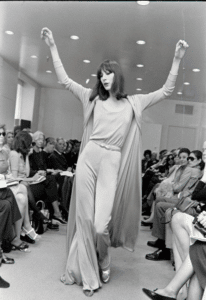
Since the start of Fashion Week, models have made expressions and danced down the catwalk, appearing to be having fun. Models today take a straight line, shoulders back, and expressionless down the runway. Supermodels’ runway stride has been altered to draw emphasis to the dress, shoes, and accessories rather than the model.
1950s New York Fashion Week
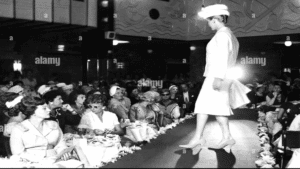
Women wore ankle-length skirts and tightened waists on and off the runway throughout the 1950s. Following World War II, ladies could finally experiment with various fashions during this decade.
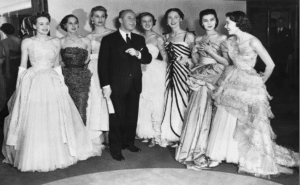
Christian Dior and Balenciaga’s New York Fashion Week shows had an impact on women’s and other designers’ collections with their couture gowns that stressed an hourglass silhouette, despite the WWII fabric shortage (Luxtailor, 2021). Because they produced a fresh feminine look that could be worn by women who stay at home or go to work, these gowns were well-liked and widely worn across America.
1960s New York Fashion Week
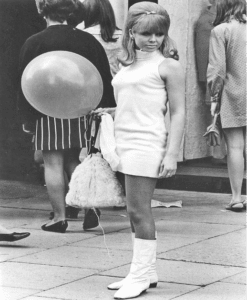
The most avant-garde and distinctive fashion styles emerged during New York Fashion Week in the 1960s. The miniskirt and minidress, which were immensely popular among young women in America this decade, were the most innovative style to come out of New York Fashion Week (Hello BigApple, 2020). With the help of this collection, both celebrities and regular American women adopted the “go-go girl” look, which consists of short straight dresses paired with tall white boots.
1970s New York Fashion Week
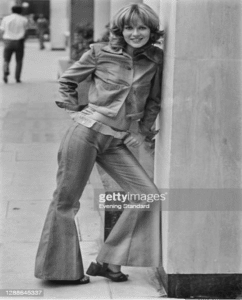
This decade saw the invention of denim and the success of Calvin Klein. Americans started noticing that everyone was wearing denim skirts, jackets, and flared bottoms and shopping for them. Williams (2019).
Although Woodstock was held in August of that year, American ladies were still sporting hippie attire at the beginning of the 1970s. However, as the decade went on, disco gained more and more popularity. One of the most well-liked New York Fashion Week designs from this decade debuted in 1975.
1980s New York Fashion Week
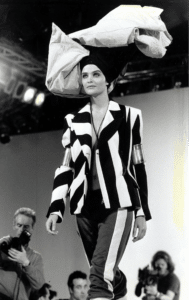
Supermodels walked the runway at New York Fashion Week for the first time in this decade. Having well-known supermodels walk the catwalk helped the designers establish the trends that were influencing Americans. Women’s athletic clothing was first shown on the runway by designers Betsy Johnson and Issey Miyake, who were well renowned for their extravagant designs.
1990s New York Fashion Week
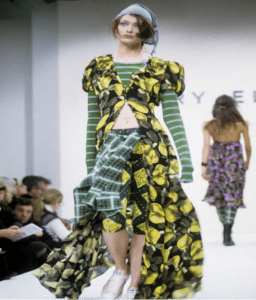
This decade’s grungey runway fashion for ladies helped make the trend popular across the nation. Platform shoes, cropped tops, flannels, and leopard print were in style among American women at the time. In 1992, Marc Jacobs debuted his “grunge collection” on the runway, which featured ripped jeans, beanies, layered flannels, leather jackets, and baby doll outfits (Chochrek, 2019).
2000s New York Fashion Week
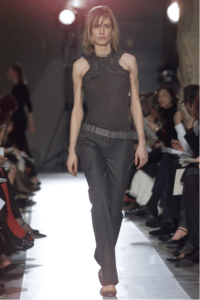
It became more common for celebrities to appear as guests on the runway during this decade. Because more individuals could now watch what designers were presenting on the runway in real-time because to the internet’s growth, New York Fashion Week was able to impact fashion more quickly than before. Many designers featured comparable items in their collections throughout this decade, including wide belts, large purses, low-rise pants, and dresses layered over jeans. Because the fashion was so distinctive from what was in vogue in 1990, these collections influenced trends for younger ladies across the nation.
2010s New York Fashion Week
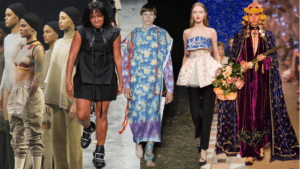
Comparatively fewer women than in prior decades were seen walking down the catwalk in extravagant couture gowns during this decade. Instead, regular streetwear was being worn by the models as they walked down the runway. Beginning in the early 2010s, tight pants and skinny jeans were widely available in practically every store and very well-liked by women of all ages. Unfitted silhouettes began to appear more frequently on runways in the 2010s.
2020s New York Fashion Week
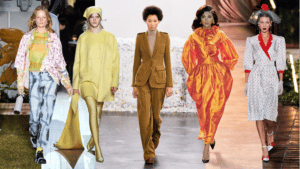
The COVID-19 epidemic at the start of 2020 put the whole world on lockdown, thereby postponing New York Fashion Week until 2022. The Zendaya x Hilfiger brightly coloured blazers and Marc Jacobs neon knit sweaters were among the many colourful collections that flooded the catwalk at this period. Given that most Americans spent this year working from home and avoiding going out, it is challenging to compare collections from the runway to popular women’s clothes. New York Fashion Week was all about fashion for the first time in a while, and designers presented vibrant and thrilling collections to help up the audience’s spirits as it was the first time Fashion Week was virtual. New York Fashion Week returned to being in-person in 2022 after a patient two-year wait. Nude colours and blouses with unusual silhouettes have grown in popularity among women over the last few months of 2022. Proenza Schouler featured several styles on the runway that featured puffy sleeves, various shades of brown, and tightened waists (Prant, 2022). Numerous companies have adopted the runway styles, like Kim Kardashian’s Skims line, where much of the clothing comes in shades of nude, and Zara, which has lately gained popularity on Tik Tok for its distinctive women’s shirts.
New York Mercedes-Benz Fashion Week in September 2022
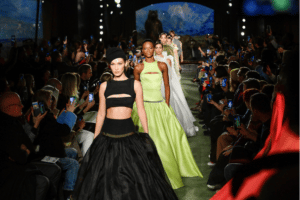
Mercedes-Benz, a company of Daimler AG, sponsors a few international fashion weeks referred to as Mercedes-Benz Fashion Week. Well-known designers including Rosenthal Tee, Mary Katrantzou, and David Koma are featured at Mercedes-Benz Fashion Weeks. Notable Mercedes-Benz Fashion Weeks have taken place in Madrid, Berlin, Georgia, Miami, Russia, Istanbul, and Mexico.
In collaboration with IMG’s NYFW: The Shows, the Council of Fashion Designers of America has issued the official New York Fashion Week preliminary schedule. September 8 to the 14th is new york fashion week. The Council of Fashion Designers of America (CFDA) and IMG revealed a tentative itinerary on Thursday. This is when most brands reveal their collections for the upcoming spring, even though it is simply stated as “September 2022.” The season begins on Friday at 4:00 p.m. with Proenza Schouler, and it ends on Wednesday at 8:00 p.m. with Tom Ford, a former CFDA chairman.
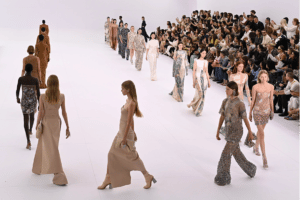
The line-up for New York Fashion Week currently has 109 confirmed designers, including Altuzarra, Brandon Maxwell, Carolina Herrera, Christian Siriano, Coach, Gabriela Hearst, Jason Wu, Khaite, LaQuan Smith, Luar, Markarian, Michael Kors, Peter Do, Prabal Gurung, Sergio Hudson, Theophilio, Tory Burch, Victor Glemaud, and Willy Chavarria. IMG launched a new initiative called the IMG Fashion Alliance last year to encourage designers who promise to present their collections in New York. Along with their comebacks, Tommy Hilfiger, and Area, three foreign brands—Fendi, Marni, and Cos—also make an appearance.
New York Fashion Week Newcomers
The 2022 CFDA/Vogue Fashion Fund finalists, many of whom have never debuted on the calendar before, are among the newbies to New York Fashion Week: New York will host the debuts of the newest collections from Fe Noel, Sukeina, No Sesso, Elena Velez, Judy Turner, Wiederhoeft, and BlackBoyKnits. In the meantime, Tia Adeola, One/Of by Patricia Voto, AnOnlyChild, Ashlyn, Heron Preston, Foo and Foo, Midnight Studios, and Foo and Foo join, making their formal debuts.










